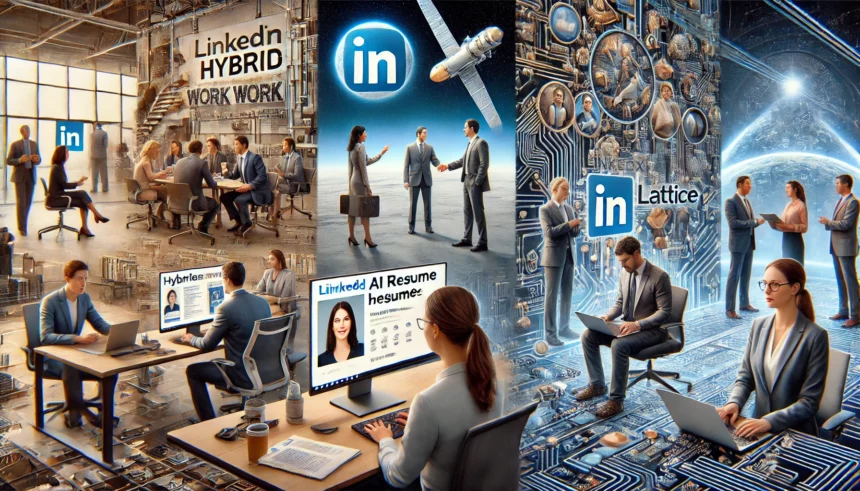Hybrid Work Models: New Data from Nature
In the realm of hybrid work, a recent study published in Nature offers some compelling insights. Led by Nick Bloom, a renowned researcher in remote work, the study involved a randomized, controlled trial at Trip.com. The findings were clear: employees on hybrid schedules experienced lower turnover and higher job satisfaction compared to their full-time in-office counterparts. Interestingly, the study did not find significant differences in performance reviews or promotion rates even after two years.
This data is crucial for Chief Human Resources Officers (CHROs) and talent leaders who face resistance from CEOs about implementing hybrid work models. The evidence is strong, and as Bloom notes, “Having a large, randomized controlled trial—they can still ignore it, but it gets a lot harder.”
AI in Job Hunting: LinkedIn’s New Tools
LinkedIn recently launched new AI tools aimed at premium job seekers. These tools, designed to help applicants’ résumés stand out, analyze existing profiles and suggest personalized improvements. They can even offer edits or rewrites of cover letters and résumés based on specific job descriptions. However, these features are only available to premium subscribers, which might be a barrier for unemployed individuals who could benefit the most from such tools.
Legal Challenges in Tech Companies
SpaceX Under Fire
SpaceX is facing a lawsuit from four male and four female former engineers over allegations of sexual harassment and retaliation. The plaintiffs claim that the company’s management knowingly allowed a toxic work environment. This follows other allegations of misconduct against CEO Elon Musk, adding to the controversy surrounding the company.
Amazon’s Union Dispute
Amazon recently had a 2022 order overturned that required the company to stop retaliating against pro-union employees. The appeals court found the initial ruling lacked sufficient explanation for its necessity. This decision comes in the wake of Amazon firing a union organizer in 2020, highlighting ongoing tensions between the company and labor unions.
The Issue of Productivity and Remote Work
Wells Fargo recently fired over a dozen employees for allegedly using “mouse movers” to simulate active work. This incident underscores the challenges companies face in ensuring productivity in a remote work environment. Devices and software that mimic employee activity became popular during the pandemic, raising questions about how to effectively monitor remote work.
Interview with Lattice CEO Sarah Franklin
AI and the Future Workforce
Lattice CEO Sarah Franklin shared her thoughts on the impact of AI in the workplace. She envisions a future where organizational charts include both human and digital workers. Franklin emphasizes the importance of managing this transition responsibly and transparently.
Hiring Digital Workers
Franklin discusses the challenges of integrating AI into the workforce, including accountability and goal-setting. She notes that CEOs are increasingly looking to AI to boost revenue without expanding headcount. This shift will require new strategies for managing a blended workforce of human and digital employees.
AI Coaching Tools
Franklin highlights the growing adoption of AI coaches, which offer benefits beyond traditional coaching. These tools can provide feedback on performance, help with difficult conversations, and support talent management. AI is poised to revolutionize performance management by making evaluations more continuous and accurate.
The Big Picture: AI and Performance Management
AI’s role in performance management is set to become more pervasive. Franklin believes AI will make assessments more ambient and integrated into daily work life, providing a better understanding of employee contributions and impact. This shift will not only change how performance is measured but also how employees interact with AI in their roles.
Conclusion
The future of work is rapidly evolving, driven by data-backed insights into hybrid models, innovative AI tools, and the integration of digital workers. As companies navigate these changes, the key will be to manage transitions responsibly and ensure that new technologies enhance, rather than hinder, the workforce experience.
















